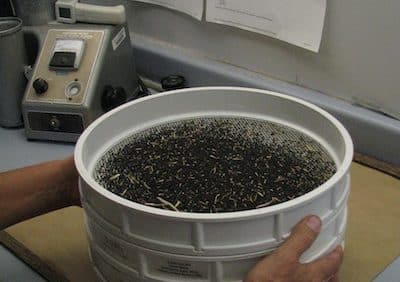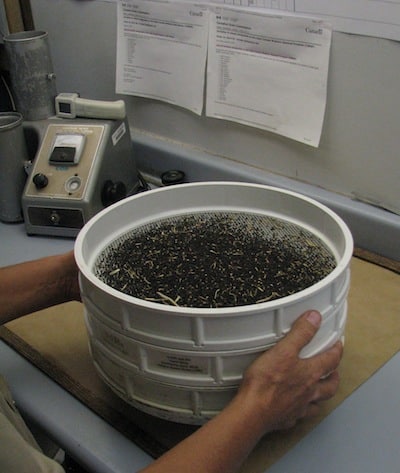Three concepts to consider while setting the combine this harvest…
1. Can dockage be too low? Does a nice clean sample mean a lot of small but high quality seed is being blown out the back of the combine with the dockage?
We don’t have data that show a good target for dockage, but the point is that a clean sample may not always be the most economical. What is worth more: A perfectly clean sample that yields 30 bu./ac. or a sample with 2% dockage that yields 35 bu./ac.? It is possible that one field could produce both results — it just depends on combine settings.
Yes, dockage can increase the storage risk, given that dockage tends to have higher moisture content and it congregates along bin sides, but the trade off may be worth it if it means higher yields. Just check the bins.
2. Change combine settings based on crop conditions. Canola losses can rise when crop gets tough and stems don’t break up like they did earlier in the day. Tough crop doesn’t move over the sieves as smoothly, and this increased density means the fan doesn’t work as efficiently. This combination of conditions can increase the amount of seed thrown out the back of the combine with the crop material. More on harvest loss management.
3. Frost damaged seed might not be a total write off. Small seeds that didn’t fill fully may still be good quality seed. Setting the combine to capture as much of this seed as possible might be the difference between profitability and not. Growers can get a set of elevator grading screens to do their own grading, or take samples to the delivery point to check the grade at various settings. The goal is to find out whether a sample with high dockage, including high amounts of immature seed but also sound small seed, is worth more or less than a sample that includes only large sound seed?
CGC Harvest Sample Program. Speaking of grading, growers can send samples to the Canadian Grain Commission Harvest Sample Program and get free grade and quality results. Tests include oil, protein and chlorophyll content for canola. The CGC accepts samples up to November each year. Find out more.


